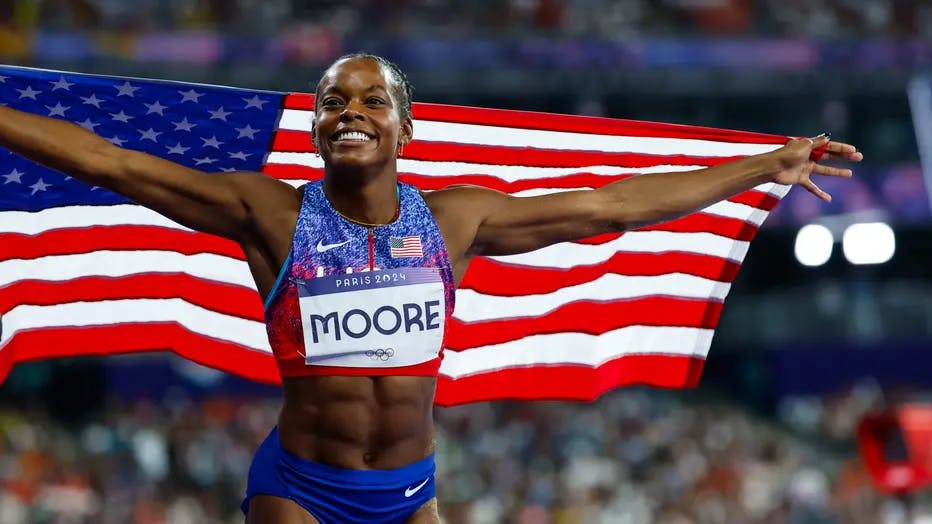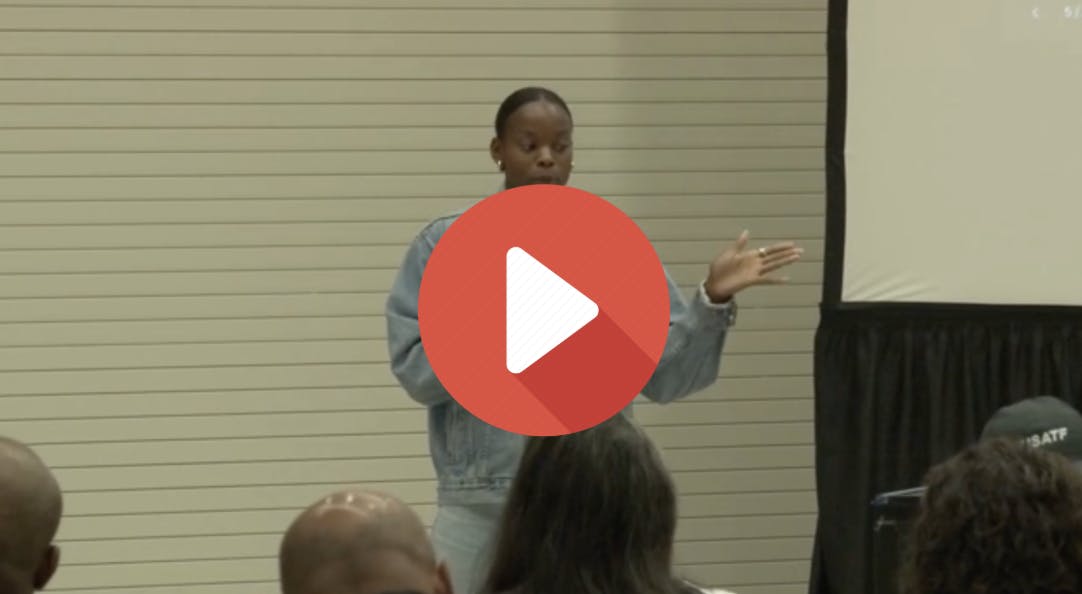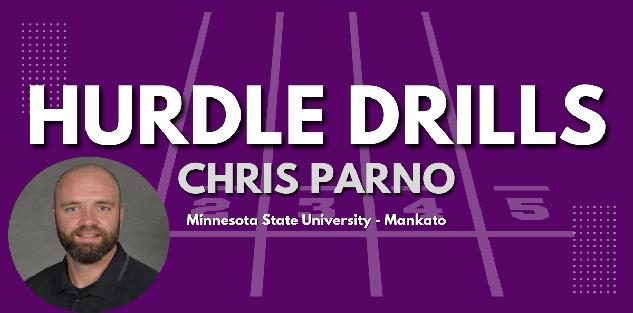Featured courses
- The Ultimate Guide to Coaching Track and Field by Jackson Chlebowy
- How TCU Coach Khadevis Robinson Builds Mental Toughness for Big 12 Track by William Markey
- Two Points of Focus When Coaching and Training Hurdles by Grant Young
- Four Keys to Maximize Winning Potential in a 400m Race by Grant Young
- Three Lessons Every Distance Running Coach Should Know by Grant Young
- Olympic Medalist Jasmine Moore’s Triple Jump Approach Technique Keys by Grant Young
- Build Strong Triple Jump Foundations with 3 Key Drills by William Markey
- Two Cues to Help With Track and Field Relay Handoffs by Grant Young
- Four Shot Put Drills to Help Develop Your Athletes by Grant Young
- Three Training Tips For Coaching 400m Runners by Grant Young
- Four Tips for Teaching the Javelin Throw by Grant Young
- 3 Pole Vault Check Points From Legendary Kansas Coach Tom Hays by Grant Young
- Two Valuable Hammer Throw Training Tips by Grant Young
- 3 Must-Try Offseason Shot Put Drills by William Markey
- Four Essential Tips For Coaching Track Relays and Sprints by Grant Young
- Florida Gators Coach Nic Petersen’s Two Keys for Teaching the Triple Jump by Grant Young
- Three Effective Drills for Improving the Long Jump by Grant Young
- Three Drills for Sprinters That Track Coaches Swear By by Grant Young
- Four Pole Vault Drills All Track and Field Coaches Should Know by Grant Young
- Explosive Track and Field Training to Level Up This Summer by Tyler Rathke
- Throwing Secrets: The Entry by Tyler Rathke
- How to Find an Endurance Athlete’s Proper Training Pace by Grant Young
- The Technique Behind Mykolas Alekna’s Discus World Record by Grant Young
- How to Build a Sprinter's Training Regimen by Grant Young
- How to Teach the Glide Shot Put by Grant Young
- Three Hurdle Drills All Track Coaches Should Know by Grant Young
- How Distance Running Coaches Can Get the Most Out of Their Athletes by Grant Young
- The Technique Behind Mondo Duplantis' Pole Vault World Record by Grant Young
- How to Coach Weightlifting For Increased Speed and Acceleration by Grant Young

Olympic Medalist Jasmine Moore’s Triple Jump Approach Technique Keys
- By Grant Young
Triple jump coaching is a highly technical art, where the best coaches understand how much success hinges on perfecting the approach run. While many spectators focus on the explosive phases after takeoff, elite jumpers know that a consistent, powerful approach makes all the difference—and few understand this better than Jasmine Moore, the Paris Olympics bronze medalist.
The approach in the triple jump isn't merely a run-up; it's the foundation for everything that follows. A well-executed approach:
- Builds the optimal horizontal velocity that converts to distance
- Establishes rhythm and consistency for the technical phases
- Creates the momentum that carries through all three jumps
- Positions the athlete perfectly for takeoff
Moore's approach technique has become her signature strength. Her bronze medal performance in Paris demonstrated how a precisely calibrated approach can elevate an athlete to the Olympic podium.
Moore's approach technique stands out for several reasons:
1. Her approach features remarkable consistency—she hits the takeoff board within centimeters nearly every attempt. This precision comes from countless repetitions and her methodical step-marking system.
2. Unlike many competitors who sacrifice control for speed, Moore maintains perfect posture throughout acceleration. She stays tall, avoiding the common mistake of leaning forward too early, which preserves energy for the explosive phases.
3. Moore's final three strides show a subtle but crucial lowering of her center of gravity—what coaches call "active touchdown"—preparing her body for the powerful conversion from horizontal to vertical movement.
Perhaps most importantly, Moore has mastered the psychological aspect of the approach. She remains composed under pressure, executing her runway pattern identically whether in practice or Olympic competition.
For triple jumpers looking to improve, studying Moore's approach technique offers invaluable lessons in the blend of speed, rhythm, and technical precision that creates championship performances. Her bronze medal in Paris was built on this foundation, proving that in the triple jump, mastering the approach truly is the key to success.
Of course, there’s more to Moore’s triple jump mastery than these basic fundamental components. But nobody is better equipped to explain the nuances of triple jump success than her. That’s why we’ve pulled several pertinent pieces of Moore’s wisdom from her ‘Triple Jump Mastery: Power, Precision, and Technique with Jasmine Moore’ clinic from the Texas Track and Field Coaches Association and are sharing them below for you.
Drive Phase Approach

Coach Moore explains that the drive phase of the triple jump is the first third of the approach. Here, the focus needs to be on powerful pushes, which is extremely different than bounding out the back.
The difference is that purposeless bounding is going to take away from momentum rather than increase it into the next phases of the jump. Therefore, each push needs to have a clear intent.
Coach Moore also emphasizes the importance of the very first step because of how it creates consistency and helps solidify the rest of the approach. She also suggests using some type of physical marker on the ground to ensure that the first step is in the right position.
When training this phase of the triple jump, Coach Moore notes that she always focuses on keeping her chest up, because having the chest down typically causes the body to have more of a bounding approach, which isn’t ideal.
Continuation Phase Approach
The next phase Coach Moore discusses is the continuation phase, which follows the drive phase and is focused on covering ground. Her main goal during this phase is to keep running aggressively, which means standing up, being in the correct body posture, nailing the running mechanics, and being keenly aware of where she is on the track.
While mechanics are crucial for every phase in the triple jump approach, Coach Moore seems to think they’re most important during this continuation phase because this is when a lot of fouls and penalties happen, which can derail an entire jump.
Transition Phase Approach

Coach Moore then goes on to discuss the final phase of the triple jump approach, which is the transition phase.
She explains how this phase consists of the last 4 to 6 steps of the approach. The main goal of this phase is to create and maintain the maximum speed possible as one gets to the board and begins the eventual jump.
Coach Moore is a big proponent of having what she calls a “mid mark” during this phase, which is a way to gauge where the runner is in their approach. It should be positioned about five steps out from the jump for each runner, which is about 28 feet for Coach Moore.
If an athlete is on their mid mark perfectly and on the board perfectly, they did their job. But if they end up a foot or so in front of the mid mark but on the board perfectly, the athlete was probably stuttering in their lead-up.
If the athlete is behind the mid mark, then they’re probably reaching, which would also require a mechanical adjustment from the coach.
Coach Moore also reiterates that the athlete’s posture and hips must remain upright as they enter the board, because the chest or hips being down will not lead to an optimal take off.




